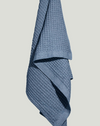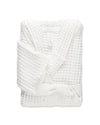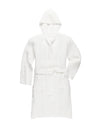Education
Wool vs Plastic Dryer Balls: Which Are Better?
Published
September 04, 2024
Reviewed by
Suze Dowling

In the world of laundry care, dryer balls have emerged as a popular accessory designed to make our clothes feel softer and look better, all while being environmentally friendly. They come in two primary types: wool and plastic. But which one is better?
This is a question that many conscientious consumers find themselves asking. Our article will dive into the world of dryer balls, comparing wool and plastic variants, to help you make an informed choice.
What Do Dryer Balls Do?
Shaped much like a tennis ball, dryer balls are designed to be tossed into the dryer along with your laundry. Their primary function is to reduce drying time by creating space between your clothes, letting hot air circulate more efficiently. The result is quicker drying times, less energy consumption, and a reduced electricity bill.
In addition to this, dryer balls also work to soften your clothes. They do this by agitating the fibers, reducing static, and maintaining the fluffiness of your fabrics. This makes them an excellent alternative to traditional fabric softeners and dryer sheets, which often contain harsh chemicals.
The benefits of using dryer balls extend beyond just energy efficiency and softer clothes. They are reusable, lasting for thousands of loads depending on the type, making them a cost-effective choice. Plus, they're an eco-friendly option, reducing the need for disposable laundry products and reducing energy consumption.
But not all dryer balls are created equal. The most common types you'll find are made from wool or plastic, each with unique set of benefits and drawbacks. Let’s explore these two types in detail to understand which might be the better option for your laundry needs.
What Are Wool Dryer Balls?
The concept of wool dryer balls isn't a new one. For centuries, people have understood the benefits of wool in terms of insulation, durability, and its natural ability to absorb moisture. However, the idea of using wool balls in the dryer to expedite the drying process and naturally soften clothes is a relatively recent innovation.
The exact origin of wool dryer balls is hard to pinpoint, as people have been using various methods to speed up drying and keep clothes soft for centuries. Some believe the concept may have originated from the old practice of adding tennis balls or other small objects to dryers to promote better air circulation. However, these methods often resulted in loud noises and were not always effective.
The transition to wool came from the understanding that wool could absorb moisture, thus speeding up the drying process, and its natural texture could help soften fabrics. Crafted from 100% pure wool, these balls are wound tightly and then felted to create a durable, reusable product that can withstand thousands of wash cycles.
The popularity of wool dryer balls skyrocketed with the rise of environmental consciousness and the desire for natural, chemical-free laundry solutions. Today, they are a popular choice for eco-conscious consumers looking for sustainable, effective alternatives to traditional fabric softeners and dryer sheets.
What Are the Benefits of Wool Dryer Balls?
Wool dryer balls are all-natural and typically handmade. They're created from 100% pure wool, which is wound tightly into a ball and then felted. This process makes them extremely durable and long-lasting, capable of withstanding thousands of washes before they need to be replaced.
One of the greatest advantages of wool dryer balls is their ability to reduce static. Wool has natural anti-static properties, which can help prevent your clothes from sticking together or clinging to you.
Additionally, they're excellent at softening clothes. The friction created by the balls bouncing around in the dryer helps to fluff up and soften your laundry, eliminating the need for chemical-laden fabric softeners or dryer sheets.
However, wool dryer balls are not without their drawbacks. They tend to be more expensive upfront than their plastic counterparts, and they may not be the best choice for those with wool allergies. Also, they can be less effective at speeding up drying times compared to plastic dryer balls.
What Are the Benefits of Plastic Dryer Balls?
Plastic dryer balls, on the other hand, are made from a type of PVC plastic. They're durable and typically have small spikes or nodules on their surface, which help to agitate your laundry and promote efficient drying.
Their primary advantage is their ability to reduce drying time. The plastic material heats up quickly and retains heat well, helping to speed up the drying process more effectively than wool. This can lead to significant energy savings over time.
Plastic dryer balls are also generally less expensive than wool ones, making them a budget-friendly choice. And unlike wool, they're suitable for those with allergies. However, plastic dryer balls have their downsides, too.
They can be noisier in the dryer than wool balls, which can be a nuisance for some users. Additionally, they're not as effective at reducing static or softening clothes. And from an environmental perspective, they're not as sustainable as wool, given that they're made from non-renewable resources and can take a long time to decompose.
Wool Dryer Balls vs. Plastic Dryer Balls: A Comparative Analysis
When comparing wool and plastic dryer balls, it's clear that each has its strengths and weaknesses. Wool balls excel in reducing static and softening clothes, while plastic balls are more effective at reducing drying time.
From an environmental standpoint, wool balls have a clear advantage. They're made from a renewable resource and are biodegradable, making them a more sustainable choice. Plastic balls, on the other hand, are made from non-renewable resources and can take hundreds of years to decompose.
In terms of cost, plastic balls typically have a lower upfront cost, making them a budget-friendly option. However, wool balls can last longer, which might offset the initial cost difference. In terms of noise, plastic balls can be louder in the dryer, which could be a consideration for those who prefer a quieter laundry process.
How Do I Use Dryer Balls?
Incorporating dryer balls into your laundry routine is simple and efficient. Essentially, you just add them into your dryer along with your freshly washed clothes.
For a standard load, you typically need three to six wool dryer balls or two to three larger plastic ones. They work with any dryer setting and are particularly effective for large, heavy-duty loads.
As your dryer runs, the balls bounce around, creating space for hot air to circulate more efficiently, which reduces drying time and helps soften your clothes. For an added touch, you can even infuse wool balls with a few drops of your favorite essential oil for a natural, subtle fragrance.
The Takeaway
In conclusion, both wool and plastic dryer balls have their unique advantages and disadvantages, and the choice often comes down to individual preferences and needs. If you value sustainability and natural materials, wool dryer balls might be the better choice. If reducing drying time and upfront cost are your primary concerns, plastic dryer balls could be more suitable.
Enhance Your Laundry Routine With Onsen Products
Speaking of fast drying times, consider pairing your choice of dryer balls with high-quality towels like the ones from Onsen. Crafted from 100% Supima cotton, our waffle-knit towels are designed to dry 3x faster than regular towels, preventing the mildew smell often associated with damp towels.
Plus, we offer wool dryer balls as part of our product range, aligning with our commitment to sustainability and practicality. Remember, the goal is to find solutions that work best for your laundry needs while also considering the impact on the environment.
By understanding the differences between wool and plastic dryer balls and pairing them with high-quality products like Onsen's towels, you can make an informed decision that aligns with your values and lifestyle. Here's to a laundry routine that's efficient, sustainable, and enjoyable!
Sources:
The History and Evolution of Wool Dryer Balls | Knowing Fabric
What Do Wool Dryer Balls Do? Here’s How to Use Them Correctly | Martha Stewart
What Are Dryer Balls and Do They Work? | CNN Underscored
What Do Dryer Balls Do and Do They Actually Work? | Bob Villa












